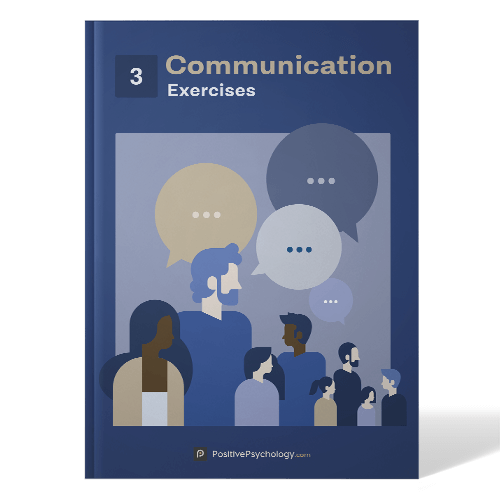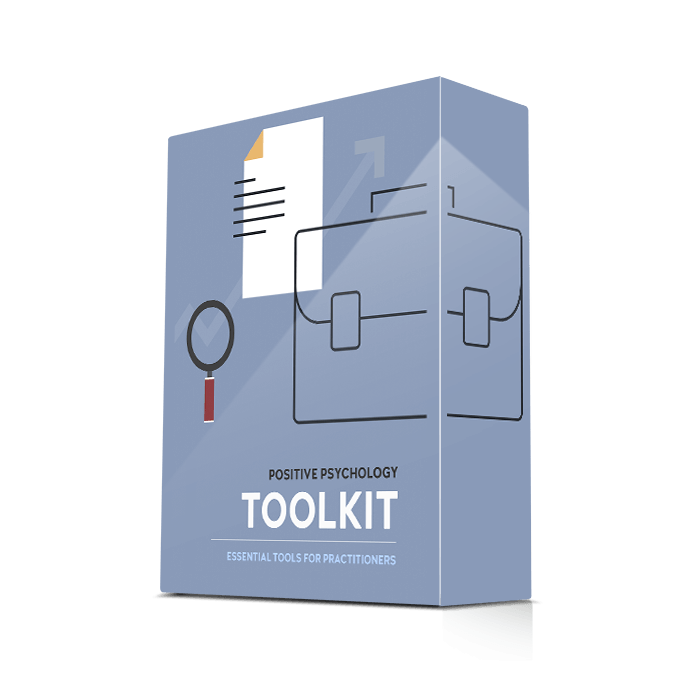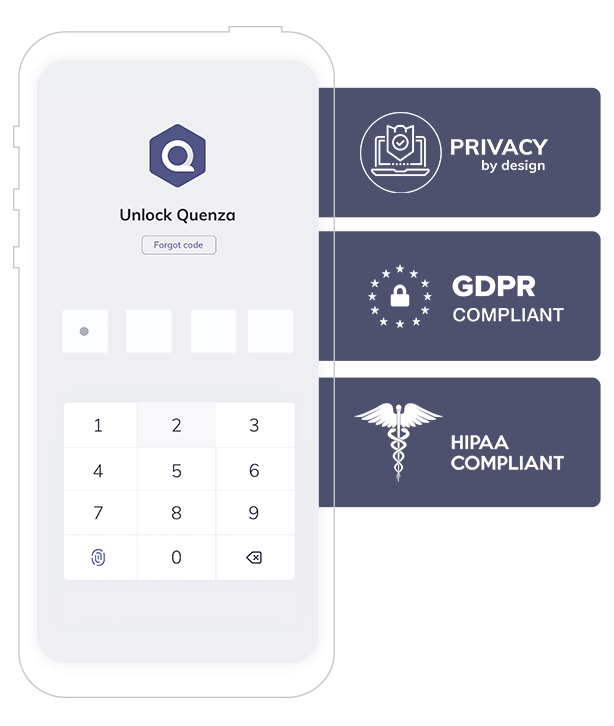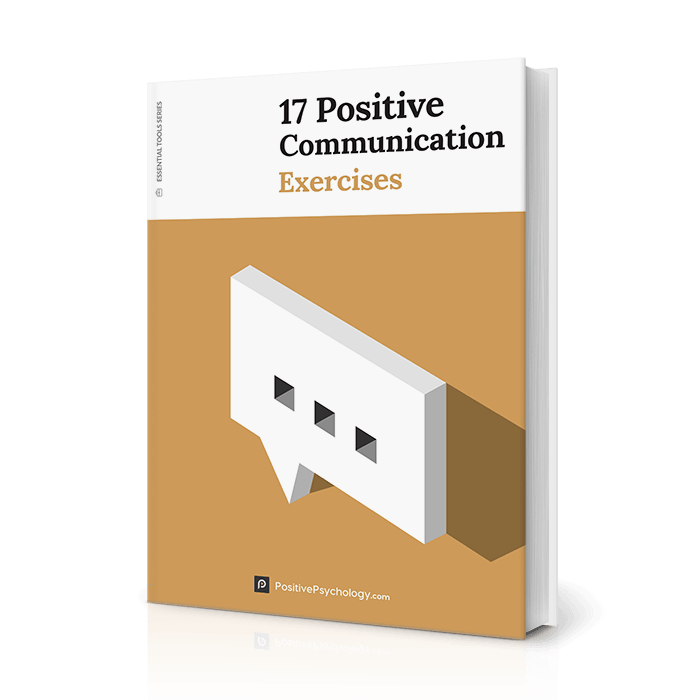

In his acclaimed book, How to Win Friends and Influence People, Dale Carnegie (2019, p. 32) hints at a key strategy involved in effective communication that involves focusing on others and their motivations:
“Instead of condemning people, let’s try to understand them. Let’s try to figure out why they do what they do. That’s a lot more profitable and intriguing than criticism and it breeds sympathy, tolerance and kindness.”
But how do we put this strategy into action?
In this post, we’ll give you the tools to be a strategic and effective communicator, no matter your context, by walking you through a range of worksheets, digital activities, and resources to discover better communication.
Before you continue, we thought you might like to download our three Positive Communication Exercises (PDF) for free. These science-based tools will help you and those you work with build better social skills and better connect with others.
Whether you’re delivering a presentation to a room full of conference attendees or hashing out a disagreement with your partner, many of the skills you need to achieve your goals in these different scenarios will be the same.
To improve your communication techniques, scholars recommend training in the following skills.
Defined as a cognitive attempt to consider another’s viewpoint (Longmire & Harrison, 2018), perspective taking enables us to communicate in a way that is likely to resonate with others in the way we intended.
Perspective taking is often referred to as putting yourself in another’s shoes.
For instance, when preparing a presentation, we can take the perspective of our audience by considering their background knowledge on the subject of our talk. By doing so, we can communicate in a way that will match the listeners’ level of background knowledge, rather than leaving them in the dust.
Likewise, we can be intentional about trying to take our partner’s perspective during a disagreement by imagining how our actions might make them feel or by imagining how we would feel if the roles in the conflict were reversed.
Usually, this involves showing empathy to the person you are speaking to and creating space for their emotions.
Self-awareness involves being able to see yourself clearly and objectively through reflection and introspection. It requires you to separate your sense of identity from your thoughts and emotions.
But why is this important?
According to organizational psychologist Tasha Eurich (Workforce.com, 2020), we can only be as good at influence or collaboration (and a range of other skills) as we are at self-awareness. That is to say, if we work to develop our self-awareness, it can have a ripple effect on our ability to communicate, engage, and empathize with others.
In the example of delivering a conference presentation, self-awareness may help us recognize that we appear withdrawn when speaking to a crowd. This awareness then enables us to amend our behavior and style of communication.
Likewise, in the example of the disagreement with a partner, self-awareness might help us recognize our tendency to grow defensive to perceived criticism in a particular area. Self-awareness can counter this, allowing us to remain open minded and curious in such discussions.
In sum, good communication involves balancing our own perspective with that of others to convey a message successfully and accept feedback.

As noted, a key component of both perspective taking and self-awareness is empathy.
To empathize is to
“respond to another’s perceived emotional state by experiencing feelings of a similar sort.”
Chismar, 1988, p. 257
Showing empathy is another way to take the perspective of a conversation partner by acknowledging and validating their emotions in a situation.
No matter the situation, there’s usually a place for empathic communication. Let’s look at three scenarios. For each, see if you can identify the more empathic response out of the two response options.
Which of the following is the more empathic response?
Which of the following is the more empathic response?
Which of the following is the more empathic response?
In each of the above scenarios, Response B is the more empathic option. In these responses, the speaker validates the other person’s emotions and reflects them back to the other person.
Response A reflects different forms of communication in each scenario: one-upping, explaining, and advising, respectively. These are just a few different styles of response that you can learn more about in our free Empathy Bingo worksheet.

These detailed, science-based exercises will equip you or your clients with tools to improve communication skills and enjoy more positive social interactions with others.
Download PDF
By filling out your name and email address below.
Let’s now look at three free worksheets and tools you can use to help develop your clients’ perspective taking, self-awareness, and empathy when communicating.

Improving your communication skills need not be tedious for you and your clients.
Check out these three games for both children and adults, designed to make strengthening communication with others fun:
Want to assess your client’s communication skills? Look at these three useful questionnaires and scales:

The Positive Psychology Toolkit© is a groundbreaking practitioner resource containing over 500 science-based exercises, activities, interventions, questionnaires, and assessments created by experts using the latest positive psychology research.
Updated monthly. 100% Science-based.
“The best positive psychology resource out there!”
— Emiliya Zhivotovskaya, Flourishing Center CEO
Many of the social skills that contribute to effective communication in face-to-face situations are equally important when communicating virtually.
Thankfully, many new tools, games, and approaches are emerging to help facilitate communication training and skill development through virtual channels.

If you’re looking to improve communication with a small group or work team, here are some fun games and digital interventions you can use to have fun, break the ice, and encourage open communication via video conferencing.
Time: About one minute per round
How to play: Determine a turn order for each participant in the call. Begin by having the first player say a word. Participants must then proceed in sequence, saying synonyms for that original word without repeating a word already said. The first player to take longer than five seconds to say a word is eliminated from the next round.
Time: About one hour
How to play: With virtual escape rooms, players must work in teams to watch videos, track clues, and cooperate, all to escape a virtual environment or race another team to complete a series of puzzles.
See The Escape Game for a popular virtual escape room provider and more information.
Time: Typically one to two hours
How to play: Each participant in a call is assigned a character or role with background information about their motivations and why they might be a suspect in a central murder mystery. Participants must then chat with one another in character to deduce information about the possible murderer (or point the finger at someone else if they are the murderer).
Check out the whodunnit app for a popular virtual murder mystery provider.
If you’re a counselor, therapist, or social worker looking for tools to help your clients improve their communication, be sure to check out the growing library of pre-programmed tools available via the platform Quenza.
We designed this platform in collaboration with the positive psychology community to put leading science-backed worksheets and tools directly into the hands of helping practitioners and their clients.
To illustrate, here are just a couple of communication tools available through the platform, which you can access and try for yourself for just $1:

If you’re curious about using digital interventions as part of your relationship counseling, coaching, or psychology practice, consider how these interventions might interact with other elements of your business.
In general, using digital platforms can streamline many aspects of your workflow while enabling clients to work within an organized digital environment, where all their information is in one place.
Benefits of using digital platforms to deliver care can include the following:
Quenza offers all these benefits, and new features are always being added. Getting started with the platform takes only three steps:
To learn more, take a look at the Quenza roadmap for a summary of existing and upcoming features.

17 Positive Communication Exercises [PDFs] to help others develop communication skills for successful social interactions and positive, fulfilling relationships.
Created by Experts. 100% Science-based.
Looking for more resources to teach communication skills? Here are some free materials you can use when conducting therapy, coaching, or counseling with groups:
Whether you’re the quietest person at a table or a smooth-talking socialite, the ability to put yourself in the shoes of those with whom you speak is key to effective communication.
Likewise, understanding yourself in terms of your strengths and potential biases when communicating can only serve you as you connect with others. Be sure to check out the resources throughout this post to help you or your clients develop these skills today for better relationships tomorrow.
We hope you’ve found this post and the listed resources useful. Let us know in the comments: What’s one technique or skill you’ve used to improve your communication?
We’d love to hear from you!
ReferencesNicole is a behavioral scientist and writer based in Perth, Western Australia. Her research interests lie at the intersection between wellbeing, personal energy, and positive psychology, and her work appears in several top business journals, including the Journal of Organizational Behavior.

Share this article:
Very helpful tips. If you offer any continuing professional development courses or training sessions please let me know. Thank you. Reply